Best used smartphones in 2024
If you're looking for a low-priced phone that still delivers great features, consider buying one of the best used smartphones.
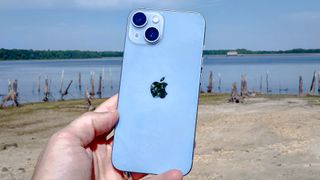
1. The list in brief
2. Best overall
3. Best cheap phone
4. Best Android
5. Best phablet
6. Best Pixel
7. Best wildcard
8. Best cheap Android
9. How we choose
10. How we test
The best used smartphones are a great way to save money on recently-released device. It may be satisfying to have the latest and best phone, but with price tags only getting higher they're getting less and less affordable. If you're short on cash, you may find there are much better ways to spend that money.
The only question is figuring out which used phone is right for you and how much you'll be expecting to pay. Fortunately the best phones always get a pretty generous price cut once a successor appears, and some people do religiously upgrade each 1-2 years. That means it's pretty easy to find a gently-used handset that may only be a year or two old.
So whether you want an iPhone, a Samsung or something else entirely, these are the best used smartphones you can pick up right now.
The quick list
Here are the best used smartphones you can buy right now, based on our own testing. You can scroll down the page to find more in-depth information about each model and what makes them so great.
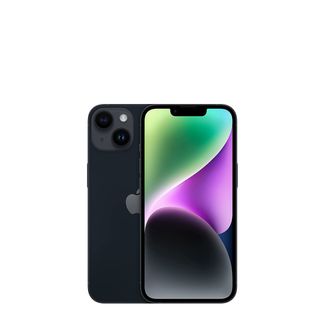
The best used smartphone overall
If you're looking for the iPhone experience without paying for an iPhone 15, there's never any shortage of last year's iPhones. The iPhone 14 comes with a nice bright display, improved performance, good battery life and a fantastic set of cameras. What more could you ask for?
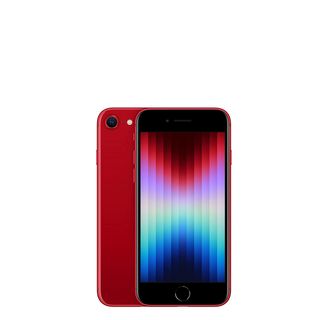
The best cheap used smartphone
If you still need something cheap, then Apple has made the iPhone SE one of the best value mid-range phones around. Not only does it come with an affordable price tag, it still packs in great performance and camera quality. Better still it's not that old, so it should get software support for a good few years yet.
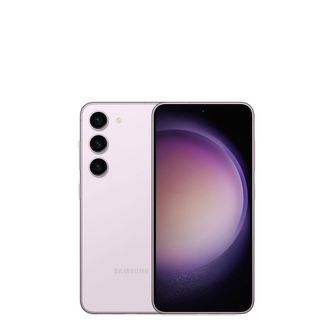
Best used Android smartphone
If iPhones aren't for you, there's always Android — and the best Androids tend to come from Samsung. The Galaxy S23 is last year's flagship and has all the appropriate features to go with it. Solid cameras, a bright colorful display, great Snapdragon 8 Gen 2 for Galaxy performance and more. And for a much lower price than the Galaxy S24 would set you back.

The best used phablet
If you want a more tablet-inspired experience in your phone, then the Samsung Galaxy S23 Ultra is one to check out. This 6.9-inch display offers the best of the Galaxy S23 range, with a gorgeous display and fantastic photography capabilities. It also offers support for the S-Pen stylus.
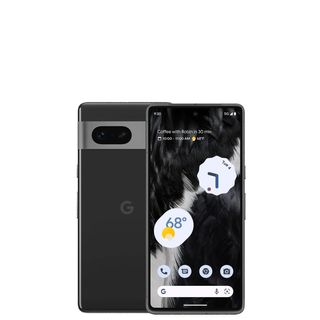
Best used Pixel
Google Pixel 7 offers a great array of features for slightly less than other flagships. There's a gorgeous bright display, powerful AI editing features, terrific cameras and early access to the latest and best Android updates.

Best wildcard
If you're looking for something with flagship killer status, there's always the OnePlus 11. Not only does this phone offer excellent battery life, it also comes with a gorgeous design, the best OnePlus cameras at the time of release and a cheaper price tag. Oxygen OS is pretty clean and nice to use as well.
The full list: Best used smartphones you can buy today

Specifications
Reasons to buy
Reasons to avoid
The iPhone 15 may have stolen the iPhone 14's thunder, but there's still plenty to love about the phone — especially if you're looking to save some money. Sure the iPhone 14 may not have had a particularly compared to its predecessor, and it lacks many of the iPhone 15's refinements, but it's far from a bad phone.
The dual 12MP rear cameras proved they could take excellent photos, and the A15 Bionic is still one of the better mobile chipsets on the market — despite reaching its 2nd birthday. You just have to remember that this isn't an iPhone 15 or even an iPhone 14 Pro, both of which are a little more impressive.
It's also worth remembering that the iPhone 15 display had no technical upgrades beyond the Dynamic Island. So if you can handle a notched screen for a little longer, everything on the iPhone 14's will look exactly the same as the newer model.
But at the same time the iPhone 14 is $100 cheaper when bought new, and buying used has the potential to save you even more money. And those prices are only going to get lower as time goes on, especially as get closer to the Black Friday sales season.
Of course if you're not ready for an iPhone 14 right now, keep your eyes open for a bargain. Now that the iPhone 15 is officially here, iPhone 14 prices are only going to decrease.
What you'll pay for a used iPhone 14
From $461 on Swappa
From $479 on Amazon (Refurbished)
From $509 on Gazelle
From $549 on Decluttr
Read our full iPhone 14 review
Best cheap used smartphone
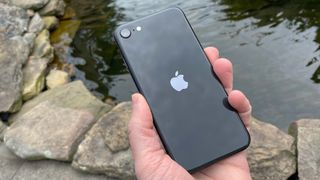

Specifications
Reasons to buy
Reasons to avoid
The iPhone SE 2020 is already a great value phone, but picking up a used model means you can save even more on Apple's budget iPhone. Your savings will be limited, considering the phone's $399 MSRP, but now that the iPhone SE 2022 is here the second generation model's price is going down.
You can have an iPhone 8-inspired design, but with some of the same hardware as the iPhone 11. There's the powerful A13 Bionic processor, wireless charging, a 12MP camera that uses computational photography to great effect, water resistance, and a solid nine plus hours of battery life based on our testing.
What you'll pay for a used iPhone SE (2020)
From $139 on Amazon (refurbished)
From $109 on Decluttr
From $74 on Gazelle
From $104 on Swappa
Read our full iPhone SE (2020) review.
Best used Android smartphone

Specifications
Reasons to buy
Reasons to avoid
Samsung is typically not one to make huge changes from one flagship to the next, so you're not missing a lot if you opt for a Galaxy S23 instead of a shiny new Galaxy S24.
The S23 has the overclocked Snapdragon 8 Gen 2 for Galaxy, and the minor battery increase has led to over two and a half hours more battery life compared to the Galaxy S22. The cameras, screen charging specs and software are pretty similar to the Galaxy S24, and the phone will be getting new Galaxy AI enhancements in the near future.
What you'll pay for a Samsung Galaxy S23
From $450 on Amazon (Refurbished)
From $342 on Swappa
From $499 on Decluttr
From $514 on Gazelle
Read our full Samsung Galaxy S23 review
Best used phablet

Specifications
Reasons to buy
Reasons to avoid
The Galaxy Note range is dead, but only in name. Instead the Galaxy S Ultra range has risen in its place. If the S24 Ultra isn't for you, then the S23 Ultra can get you a lot of the same great stuff at a fraction of the price. That includes support for the S Pen, an incredible 200MP main camera, 45W charging and a glorious 1-120Hz adaptive display.
It's even set to get some of the same Galaxy AI features as the Galaxy S24 Ultra. Word is that will include features like Instant Slo-Mo, Live Translate, Interpreter mode and Chat Assist. The new handset may have better battery life and upgraded camera lenses, but if you don't want to pay full price for the latest model, this is a great option.
What you'll pay for a used Galaxy S23 Ultra
From $829 on Amazon (Refurbished)
From $670 on Swappa
From $799 on Gazelle
From $784 on Decluttr
Read our full Galaxy S23 Ultra review
Best used Pixel phone
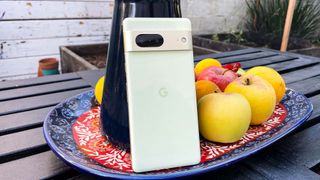
Specifications
Reasons to buy
Reasons to avoid
The Google Pixel 7 has a lot going for it, but it always felt overpriced for what it was. Thankfully the launch of the much more impressive (and expensive) Pixel 8 means the price has started dropping, and will likely continue as people start to offload their older devices.
The inclusion of Google's Tensor G2 sensor may not make it a performance monster, but it does mean there are several features and improvements you can't get on other phones. The chip is built to offer better security and machine learning capabilities, improving cameras and offering features like witchcraft-like Photo Unblur. The Pixel 7 also tweaks the unique design of its predecessor, while offering excellent photography and a bright colorful display.
What you'll pay for a used Google Pixel 7
From $274 on Amazon (Refurbished)
From $266 on Swappa
From $319 on Decluttr
From $339 on Gazelle
Read our full Pixel 7 review
Best wildcard used phone
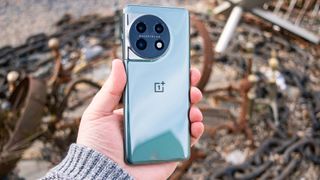
Specifications
Reasons to buy
Reasons to avoid
OnePlus produces some fantastic phones, though they certainly release a lot of them. Which is why picking up last year's OnePlus 11 is always worth thinking about. With the OnePlus 12 on sale, you can expect to find the previous device for a lot less than it would have cost you this time last year.
Not only does OnePlus throw in an incredible display, fast charging, 5G and a powerful Snapdragon 8 Gen 2 processor, you also have some of the best phone battery life — even one year on. Not quite as much as the OnePlus 12, but still pretty high On top of that Oxygen OS has proven itself to be one of the cleanest versions of Android you can buy.
The camera's a significant improvement over what came before, even if the telephoto lens tops out with 2x magnification. Sadly this model doesn't come with wireless charging, which may be a deal breaker, though the 80W wired charging may help make up for it.
What you'll pay for a used OnePlus 11
From $579 on Amazon (Renewed)
From $484 on Swappa
Read our full OnePlus 11 review
Best cheap Android

Specifications
Reasons to buy
Reasons to avoid
Now that the Pixel 7a is here you're going to start seeing the Google Pixel 6a drop in price. So $499 was a little too pricey for you, then you'll want to keep your eyes peeled. The Pixel 6a is one of the best cheap phones, with a bunch of impressive features in a conveniently-affordable package.
It's got a large 6.1-inch display, sub-6GHz 5G, wireless charging, a dual camera setup with 64MP main and 13MP ultrawide lenses, and a 13MP selfie camera. The battery is also pretty great, lasting 10 hours and 5 minutes during our testing regiment. Not to mention the fact that it's powered by the Tensor G2 chipset with all the AI-powered features that comes with.
From $2196 on Amazon (refurbished)
From $172 on Swappa
Read our full Pixel 6a review
How to pick the best used smartphone for you
Deciding which used smartphone to buy is a bit harder than choosing a new phone, for obvious reasons. Aside from the fact you want to ensure the particular device you're looking at is in acceptable condition, you also have to consider whether or not the model you're interested in will be up to the task to handle what you expect to throw at it.
Flagship smartphones are more powerful than many of us realize, and so even if you buy a device that's two years old, you're still likely to get a phone that's more than powerful enough to handle everyday tasks. From browsing social media apps and websites, to GPS navigation, video and music streaming and snapping photos.
Where you might begin to see an older phone sweat pertains to those really taxing use cases, like playing the most strenuous, graphically rich mobile games and 4K video recording. Additionally, if the battery in an old phone has never been replaced with a fresh unit, it's likely deteriorated to the point where it won't last very long on a charge — another factor to consider.
You also have to be mindful of the status of software and security updates on the device. This is a particular area in which it pays to buy an older iPhone, because Apple supports its handsets for far longer than the standard 2-3 year policies Android phone makers commit to. In fact, the iPhone 8 — a device that released in 2017 — can still get iOS 17, the upcoming version of Apple's mobile operating system. The best case scenario on Android is the four years of updates Google reserves for its own Pixel devices and Samsung devices bought after 2019.
How we test smartphones
Every smartphone Tom’s Guide evaluates is tested for several days in real-world use cases and benchmarked with a gamut of performance-measuring apps. In terms of performance, we used Geekbench 5 to measure overall speed and GFXBench to measure graphics performance.
We also use our own video editing test in the Adobe Premiere Rush app to see how long it takes to transcode a clip, which we run on both Android phones and iPhone to compare performance.
We use a light meter to ascertain display quality data, like brightness and color accuracy, and our proprietary battery test determines longevity on a charge by continuously loading live webpages over a 4G or 5G network. We set each phone to 150 nits of screen brightness and try to use T-Mobile's network each time in order to achieve comparable results across phones.
Lastly, we explore the software, test gaming performance and conduct live camera comparisons with rival handsets — and each of these factors play a part in our comprehensive verdict.